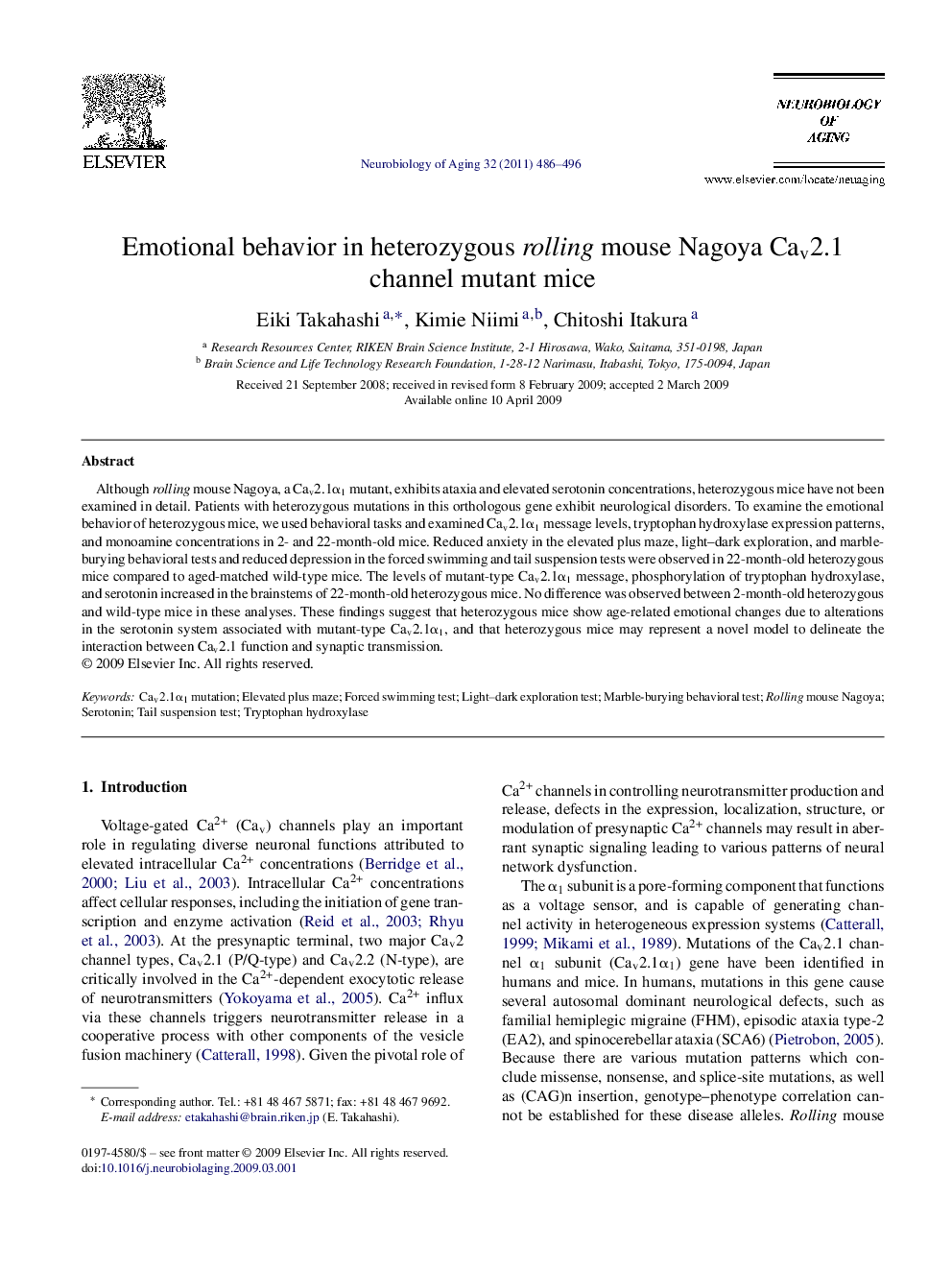| Article ID | Journal | Published Year | Pages | File Type |
|---|---|---|---|---|
| 329249 | Neurobiology of Aging | 2011 | 11 Pages |
Although rolling mouse Nagoya, a Cav2.1α1 mutant, exhibits ataxia and elevated serotonin concentrations, heterozygous mice have not been examined in detail. Patients with heterozygous mutations in this orthologous gene exhibit neurological disorders. To examine the emotional behavior of heterozygous mice, we used behavioral tasks and examined Cav2.1α1 message levels, tryptophan hydroxylase expression patterns, and monoamine concentrations in 2- and 22-month-old mice. Reduced anxiety in the elevated plus maze, light–dark exploration, and marble-burying behavioral tests and reduced depression in the forced swimming and tail suspension tests were observed in 22-month-old heterozygous mice compared to aged-matched wild-type mice. The levels of mutant-type Cav2.1α1 message, phosphorylation of tryptophan hydroxylase, and serotonin increased in the brainstems of 22-month-old heterozygous mice. No difference was observed between 2-month-old heterozygous and wild-type mice in these analyses. These findings suggest that heterozygous mice show age-related emotional changes due to alterations in the serotonin system associated with mutant-type Cav2.1α1, and that heterozygous mice may represent a novel model to delineate the interaction between Cav2.1 function and synaptic transmission.
